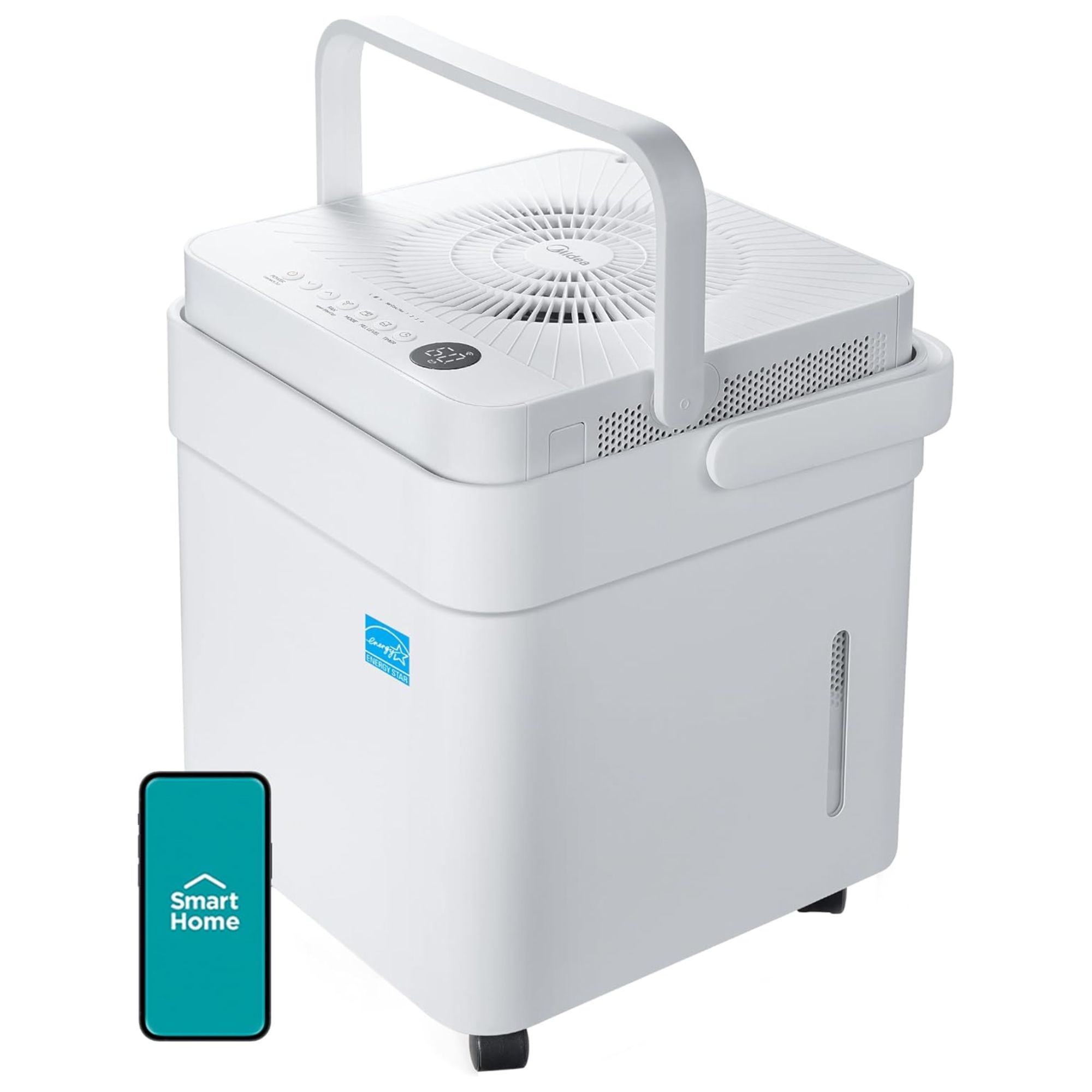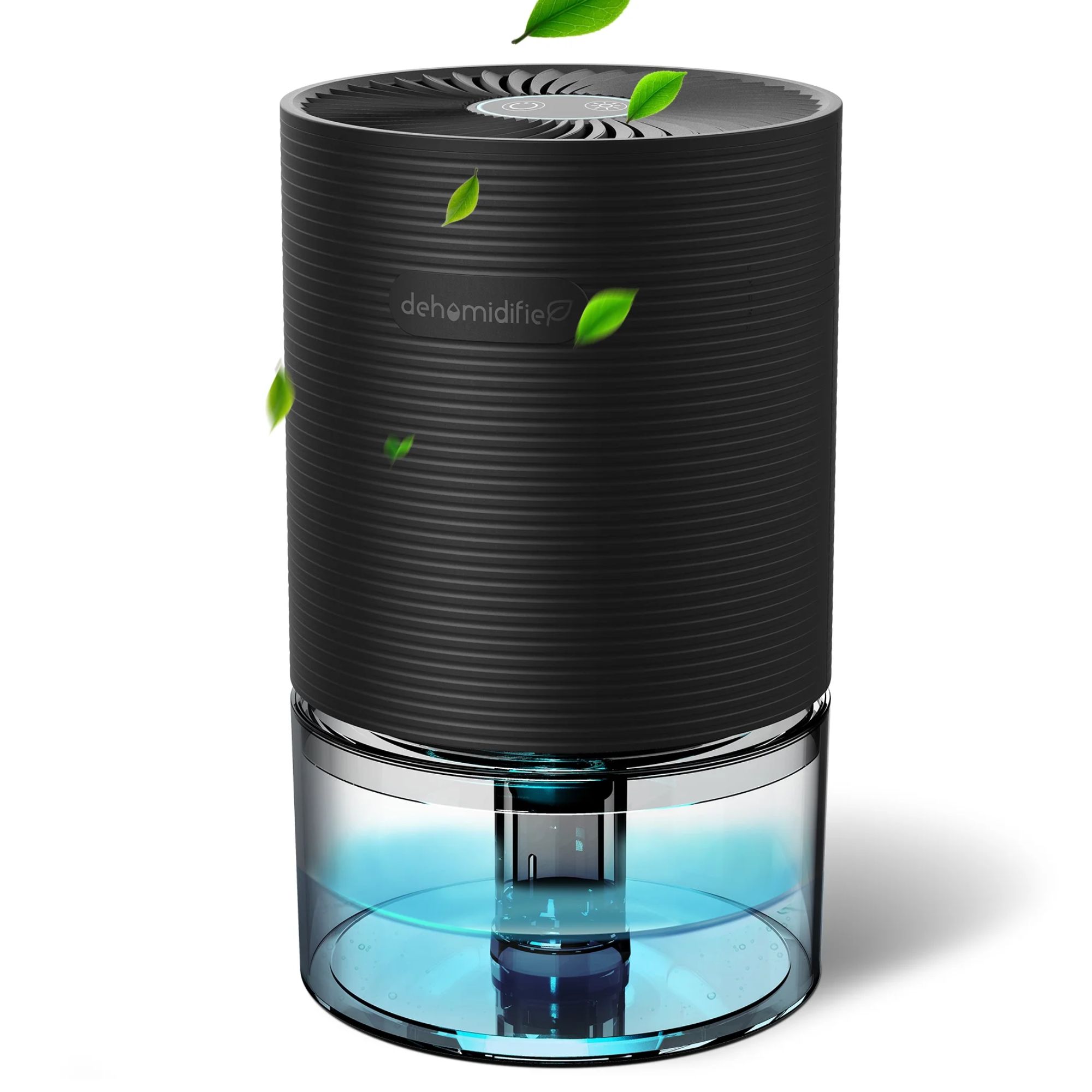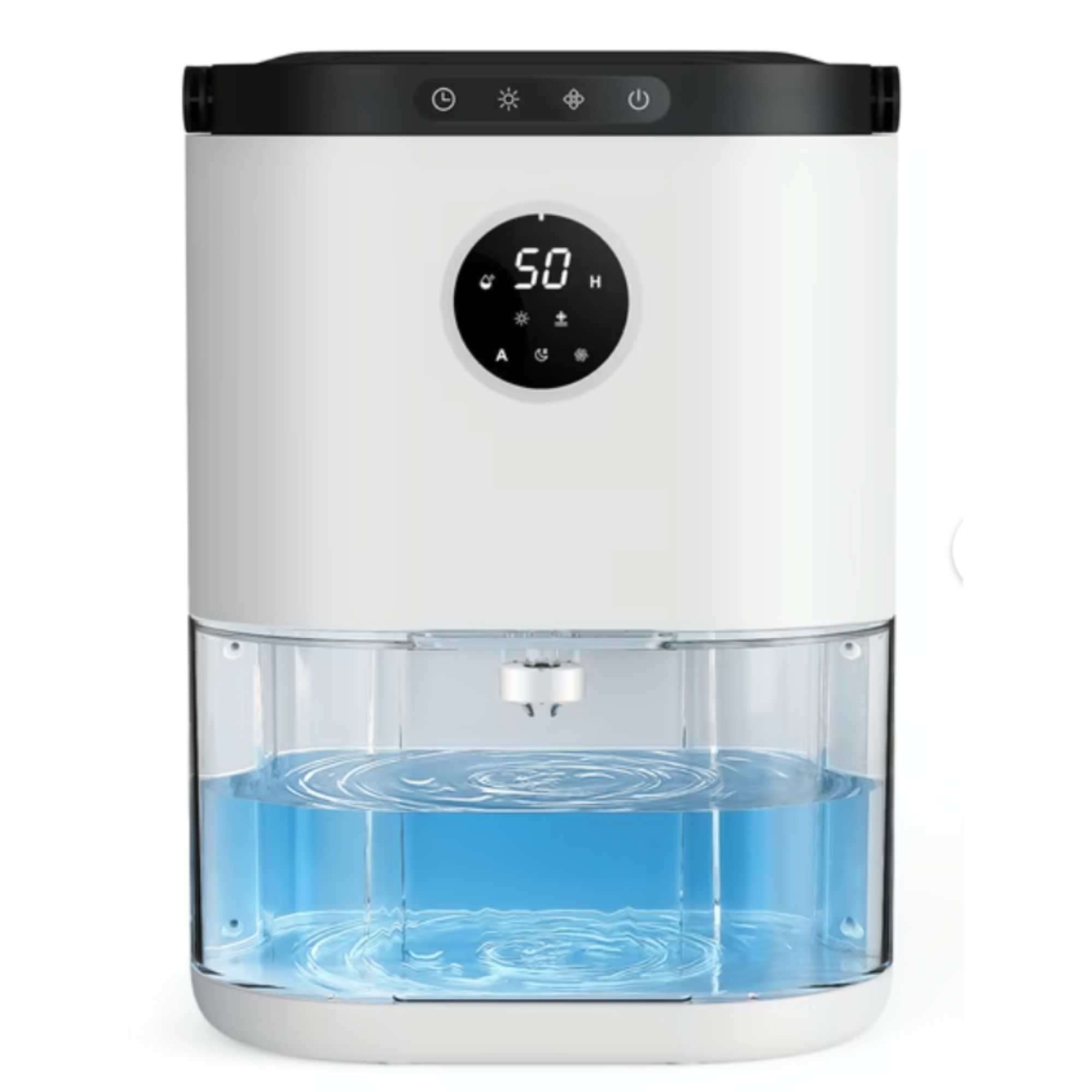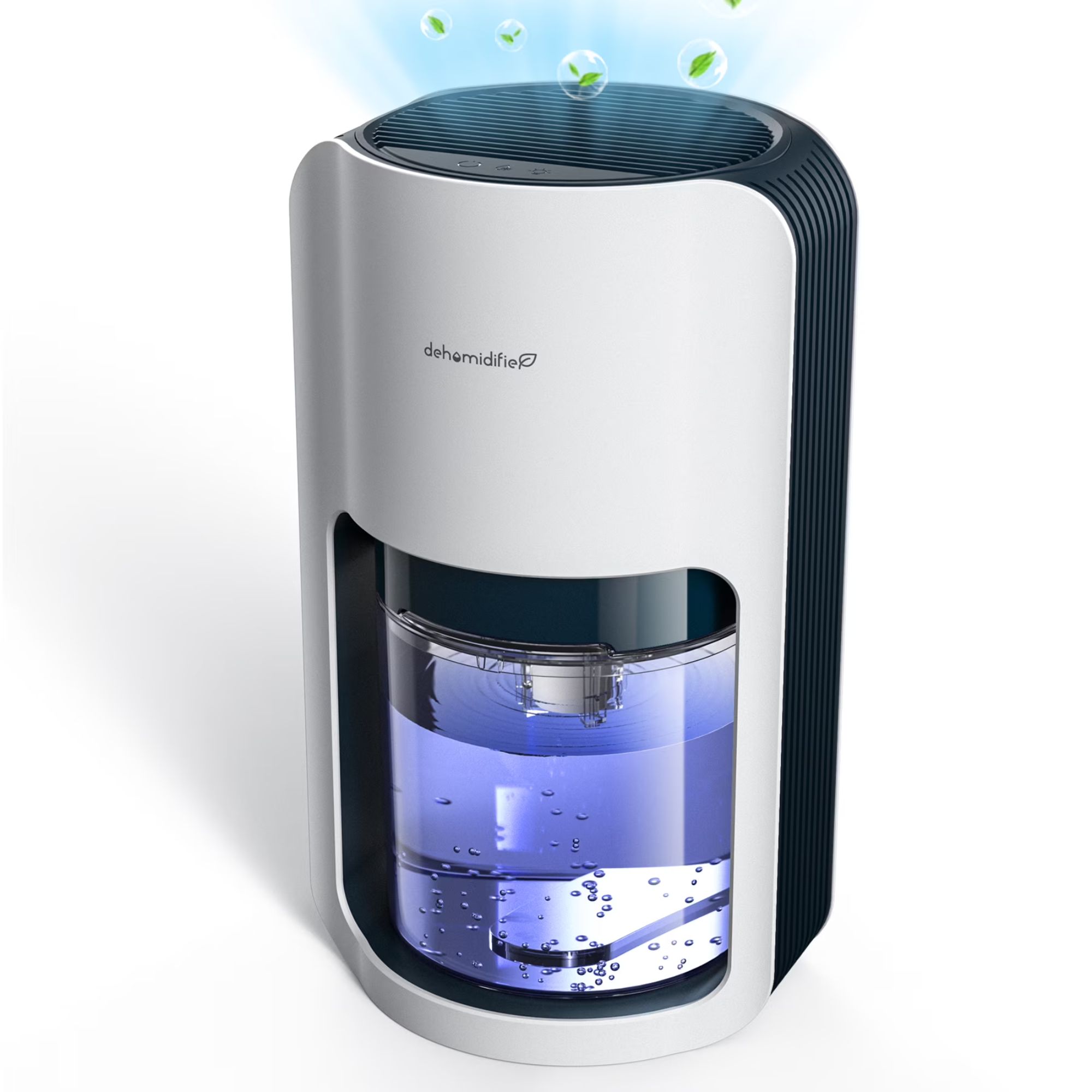HVAC Experts Reveal Exactly How Many Dehumidifiers You Need to Combat Condensation and Mold This Winter
Learn to spot the tell-tale signs that you need more


We all know that dehumidifiers are essential for combating condensation, mold, and high humidity in cold weather, but how many do you actually need to maximize their efficacy and keep your home comfortable?
Our HVAC experts say the answer heavily depends on a number of key factors, such as the size of the area, the severity of dampness and condensation, and airflow.
Here, they explain how to successfully use a dehumidifier to prevent and get rid of mold and mildew in your home and how to decide how many you need for optimum results.
Which Factors Determine How Many Dehumidifiers You Will Need?
If you're looking to invest in one of the best dehumidifiers, the number you'll need to effectively remove damp and condensation in your home depends on several key factors.
As Tony Abate, certified indoor environmentalist and vice president and chief technology officer at AtmosAir Solutions, an indoor air purification and monitoring technology company, says, 'There is no universal answer, as every home is unique in size and layout. However, understanding these factors helps you make an informed decision and ensure your home remains comfortable and healthy.'
Key considerations include:
- The size of the area: 'This square footage of the space you want to dehumidify,' says Tony. 'Most residential dehumidifiers are rated for a specific area, typically measured in square feet.' TJ Laury, president at Ben's ProServ, adds, 'This is the most important part, as the bigger the rooms are, the larger the dehumidifier needs to be for it to work efficiently.'
- The severity of dampness and condensation: Tony continues, 'If your home experiences frequent or severe condensation – such as water droplets on windows or walls, persistent dampness, musty odors, mold, or mildew, you might need more powerful or additional dehumidifiers to address the problem effectively.'
- The layout of the space: As Phil Oliver, co-owner of Air Treatment Heating and Cooling, says, 'A single-story, open-concept home typically requires only one large-capacity unit. In contrast, multi-level homes or those with numerous closed-off rooms benefit from multiple dehumidifiers, allowing moisture to be removed evenly.' This will also depend on whether your home has closed-off rooms or is affected by poor airflow. 'Air does not circulate freely between rooms, so a single unit may not be sufficient for an entire house unless you have an open-plan layout,' says Tony.
- The source of the moisture: Additionally, 'If moisture is coming from specific sources, such as a basement, laundry room, or bathroom, placing a dehumidifier directly in those areas can be more effective than relying on a single unit for the whole house,' advises Tony.
- The number of people living in the house: As TJ explains, this affects humidity. 'More people mean more activities, and that could also mean more humidity.'
Tell-Tale Signs That You Need to Use More Dehumidifiers

It's easy to tell if you need multiple dehumidifiers.
If you're looking to avoid any dehumidifier mistakes, it's crucial to know which signs to be aware of, which may indicate that simply knowing the best place to put a dehumidifier isn't enough, and instead, you need to use more than one.
Design expertise in your inbox – from inspiring decorating ideas and beautiful celebrity homes to practical gardening advice and shopping round-ups.
Tony adds, ''Anyone experiencing persistent dampness, condensation, or high humidity levels in their home should consider using a dehumidifier. Individuals with allergies or respiratory issues aggravated by mold and mildew.'
Both are common allergens, and Tony adds homeowners may also benefit from having a dehumidifier in areas with excess moisture. He says, 'Additionally, homes in regions with humid climates or poor ventilation are prime candidates for dehumidifiers to help maintain healthier indoor air quality.'
Here's what to keep an eye out for:
- Persistent dampness: As Tony highlights, if you notice mold, mildew, or musty odors in multiple rooms even after running a dehumidifier, it's a clear sign that you may need additional units.
- Visible condensation: 'Water droplets on windows, walls, or ceilings in rooms not served by your current dehumidifier indicate that more coverage is needed,' explains Tony. In this instance, adds TJ, you may also spot windows fogging up or have water droplets. 'If you are using paint or wallpaper, it might peel, or there may be bubbles underneath,' he advises.
- Visible mold: Which may appear as 'black spots on the walls, ceilings, or even corners,' says TJ.
- Slow drying times: Tony advises that if laundry, towels, or surfaces take a long time to dry, especially in certain rooms, those areas would likely benefit from the boost of an additional dehumidifier.
- Health symptoms: You may also find that the need for additional dehumidifiers may be a way your house is making you ill. 'Increased allergy symptoms or respiratory issues can result from mold and mildew caused by excess moisture,' warns Tony. 'If these persist, check for untreated damp areas.'
'Finally, keeping relative humidity levels lower than 60 per cent and close to the 40 per cent ideal range will improve both comfort and indoor air quality within a space,' adds Tony, and using a dehumidifier is one of the easiest ways to control humidity in the home.
'All these suggestions will help you make an informed decision to be sure your home remains comfortable, healthy, and most importantly, dry.'
There is still one important thing to note, though, which Eli Zimmer, director of operations at Luxaire HVAC Services, makes plain.
'The most common reason for needing multiple dehumidifiers is if your home is large and you don’t have a whole-house dehumidifier connected to your HVAC system,' he says. 'Standalone dehumidifiers are only going to have limited reach and may only work for just a room or two due to space limitations and the physical blocking of walls.
'If your home is excessively damp, simply using some dehumidifiers may not solve the problem. Excessive moisture in the home could likely be indicative of some more serious issue, like a leak – plumbing or structural – or a significant ventilation issue, or something else.
'So, you want to actually get to the root of the problem so that you can actually fix it, rather than just using dehumidifiers to try to make it a little better.'
What to Shop
All prices were correct at the time of publication.

TJ recommends this dehumidifier, as it delivers strong performance in a compact, flexible design. 'It covers up to 1,500 sq ft and pulls up to 20 pints of moisture per day, making it a great fit for basements, bathrooms, bedrooms, and even crawl spaces,' he says. 'It has a larger tank compared to most dehumidifiers, and it includes a drain hose. You can also adjust everything from your phone with its smart controls.'

This affordable dehumidifier is portable, effective, and ultra-quiet, with seven different LED light colors to choose from, and an auto shut-off function to prevent overflow.

'This offers robust moisture control for large spaces while remaining energy-efficient and user-friendly,' says Phil. 'Its high capacity also makes it well-suited for basements, open-concept areas, and humid climates where excess moisture can lead to mold, musty odors, and structural damage.'

This dehumidifier features a built-in handle, touch control, and 7-color nightlight with lock color mode for added convenience. Additionally, it's equipped with an 80 oz water tank that's capable of extracting up to 27 oz of water per day.

The large, transparent 70-oz water tank on this dehumidifier allows for easy monitoring of water collection, simplifying removal, emptying, and cleaning. It's suitable for use in areas up to 500 sq ft.

This budget-friendly dehumidifier is easy to use, with a one-button control switch, and is energy efficient with low power consumption.
Meet the Experts

Tony is a certified indoor environmentalist and the vice president and chief technology officer at AtmosAir Solutions, with over 20 years of experience in the HVAC industry.

TJ is the president at Ben's ProServ, which offers a range of services, including electrical, plumbing, and HVAC, to customers throughout New Jersey.

Phil is the co-owner of Air Treatment Heating and Cooling, an HVAC and indoor air quality service provider founded 58 years ago, based in Virginia. Phil has over a decade of experience in the HVAC industry.

Eli is the director of operations of Luxaire HVAC Services, which has been based in Long Island for over 32 years, specializing in expert commercial heating, cooling, and indoor air quality solutions.
Next, learn about the easy shower tricks to prevent mold in your bathroom this winter.

Ottilie joined Homes & Gardens last year, after finishing a Master's in Magazine Journalism at City, University of London. With previous contributions in Livingetc and Motorsport Magazine, she produces content for the Solved section on the website, focusing on clever tips and tricks to keep your home beautiful, organized, and clean, with particular expertise on all things home fragrance. She also has a Master's degree in English Literature and History of Art from the University of Edinburgh, where she developed a love for inspiring interiors and architecture.
You must confirm your public display name before commenting
Please logout and then login again, you will then be prompted to enter your display name.